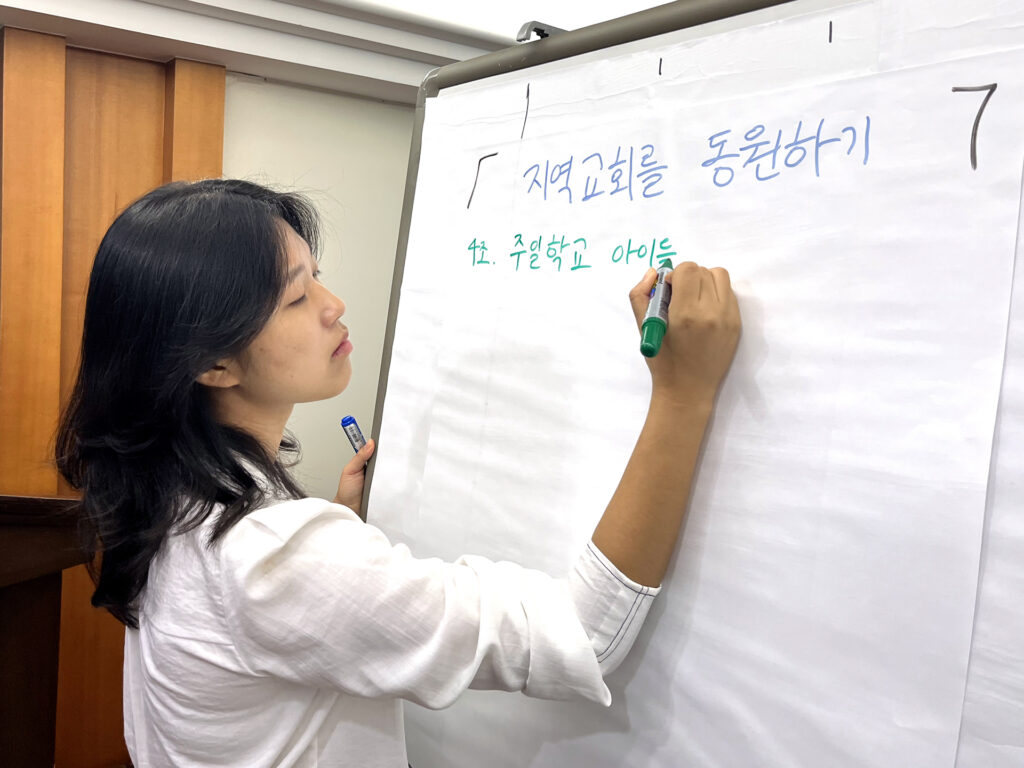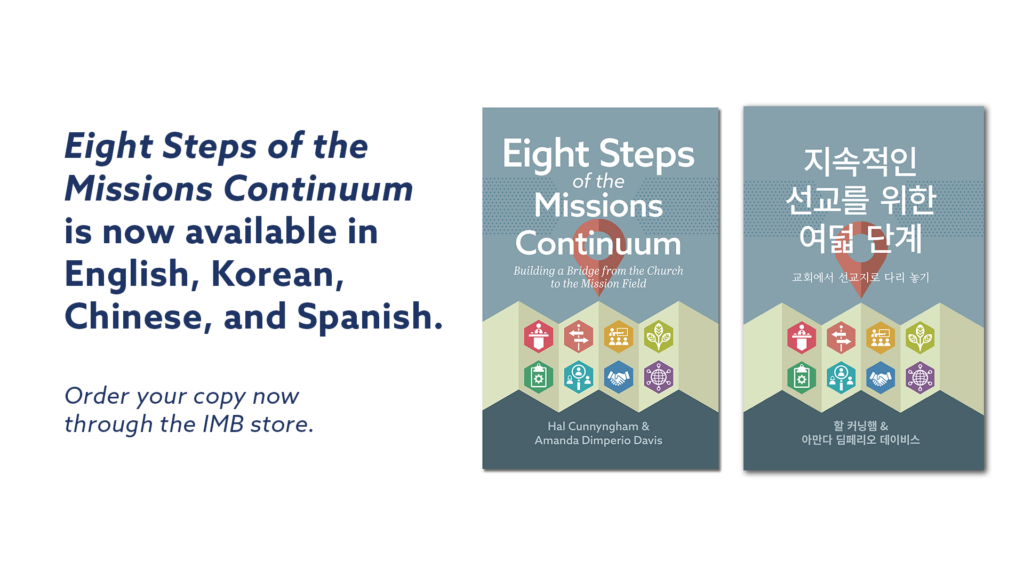
Korean pastors and church leaders greeted each other warmly, some clearly friends and others meeting for the first time. Representing different churches, they joined in the city of Asan, Korea, for one purpose. More than 40 Korean Baptist leaders met in October for a missions consultation based on the book “Eight Steps of the Missions Continuum.”
Hal Cunnyngham, International Mission Board associate vice president of global initiatives, sees a growing interest in missions training among Korean Baptists, particularly toward sending and sustaining more missionaries.

Cunnyngham told Korean Baptists he is glad to see leaders ready to participate in the training and encourage other church leaders to consider how they can be effective in sharing the Gospel cross-culturally. He brought greetings on behalf of IMB President Paul Chitwood and emphasized the importance of the IMB’s partnership with the Korea Foreign Mission Board (KFMB).
“Your churches are doing a great work and sending many missionaries,” Cunnyngham said. “My prayer is that your churches will send even more as we work together to fulfill the Great Commission. We are seeing the globalization of the missionary task.”
The message of globalization is still a new concept to many churches. The IMB uses this term to describe its work with national partners, helping them embrace their role in the Great Commission, and seeking to encourage and expand their capacity to send and receive cross-cultural missionaries.
According to the IMB, a global missionary partner is one sent and supported by a church or entity outside the U.S. who works alongside an IMB missionary team. For example, a missionary sent from the KFMB who serves alongside an IMB missionary team in Zambia is a global missionary partner (GMP).
The IMB has a long history of cooperation with Korean Baptists. Koreans have an organized and active Baptist convention, associations and Foreign Mission Board. This partnership is only getting stronger as Koreans seek to grow their commitment to sending missionaries worldwide.
But as Korean churches see fewer and fewer young people involved in their congregations, some are concerned that the churches will not be able to sustain a missionary force for the future. This is one of the reasons Korean churches and associations continue to welcome training and encouragement.
Eight steps toward greater missions involvement

“Eight Steps of the Missions Continuum” was written by Cunnyngham and Amanda Dimperio Davis, who recently retired from the IMB. Cunnyngham describes the steps as a bridge that starts with the local church and reaches the mission field.
“And there are steps in between that should be followed to effectively build this bridge that sustains missionaries on the field,” Cunnyngham said. “We want to make sure the bridge is solid and in place.”
Participants had copies of the book and accompanying workbooks translated into Korean. Sessions over three days included teaching time led by Cunnyngham and work time around tables. Poster paper lined the walls of the hotel conference room that were filled with leaders’ thoughts about topics such as why church leadership may resist raising up missionaries, what makes a great missionary, and how their churches can be mobilized for mission.
During breaks, some brought out their phones to snap pictures of the brainstorming notes. At shared meals, the men and women discussed what they were learning and how their churches could do more to build heart for the lost among their members. Many discussed ways to involve younger generations in their churches.
Action plans

Developing a plan is one of the most significant parts of the training, Cunnyngham said. That’s one reason he refers to the workshop as a consultancy, as much as a training.
Each session leads participants to assess where their church is on each step. This assessment leads to the development of action plans for progress.
Cunnyngham illustrated this point with a story of meeting with his doctor and finding out he had high blood pressure. His doctor presented him with options for improving his health, but the knowledge alone wouldn’t change his health. He needed to put the steps into action.
When leading the training, Cunnyngham starts with the eighth step, the mission field, so people understand the goal and where they will be heading. Then he goes back to step one, which focuses on the role of the church pastor to ignite the vision for missions. One participant who is on staff but not the senior pastor said he plans to talk with his pastor about developing a culture of awareness for the lost around the world and how their church can respond.
In addition to group work around the table and brainstorming on poster paper, participants learned and taught missions-related Bible studies, discussed case studies, and even role-played how to respond to people in their churches who might feel called to missions.

On the final day of training, Cunnyngham invited Min Ho Chu, president of the Korea Foreign Mission Board, to explain how the FMB was prepared to walk alongside Korean Baptist churches and what they are already doing to reach the nations. The KFMB currently has 721 missionaries serving in 61 countries.
Like the IMB, the KFMB is taking steps to provide extra support for long-term service of missionaries. They have added a consultant for missionary kids to staff, similar to the IMB’s member care team for kids. Hayoung Moon has served in the role for just over a year. She said that missionary kids are already responding to opportunities to connect with each other and with adults who are prepared to offer the kind of unique care they need. She said she recognizes that caring well for the kids means families are healthier and that a new generation of missionaries can be prepared for the future.
Hun Sol, an IMB missionary who leads a church-planting team among university students and young adults in Seoul, had time to explain to church leaders how the IMB could serve them and how they could partner cooperatively for the sake of the Gospel. Some church leaders in the group were not familiar with IMB’s work in Korea or the many ways that the IMB and Korea FMB work together. The IMB has 43 missionaries currently serving in Korea.
Future workshops are already planned in Korea and other countries. “Eight Steps of the Missions Continuum – Building a Bridge from the Church to the Mission Field” can be ordered through IMB’s online store. For information on how your church can host a training event based on the book, contact [email protected]. Books and workbooks are made available for those who participate in workshops.















